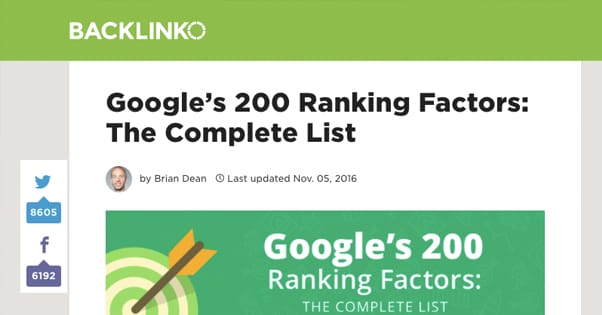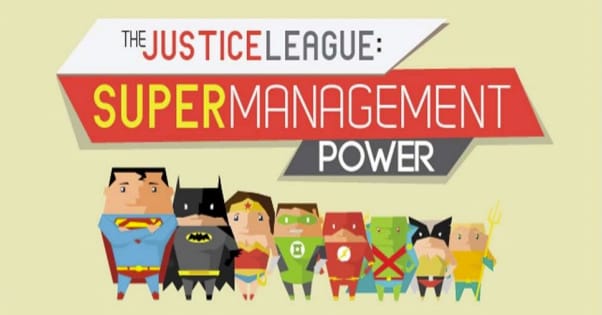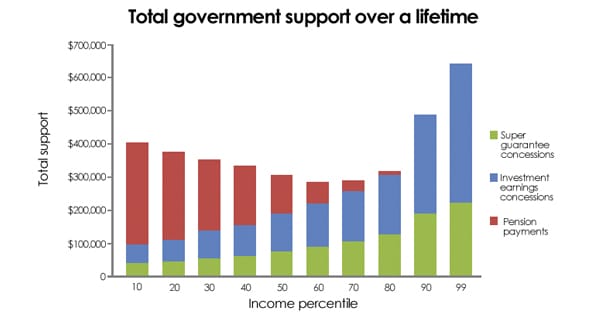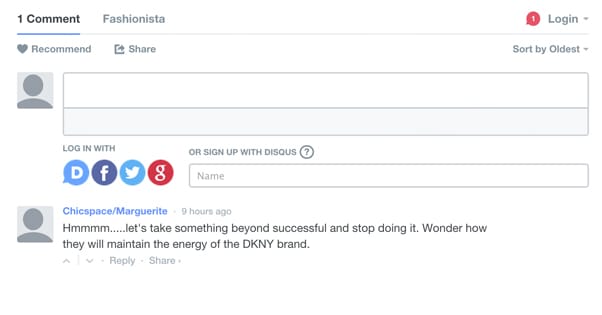The Ultimate Guide to Improving User Engagement on Your Blog
Published by Drew Hendricks • Content Marketing • Posted November 3, 2017 ContentPowered.com
ContentPowered.com
As a blogger, it can often be pretty disheartening from day to day to grind away at content and see nothing tangible in return. Sure, you can look at analytics and see traffic numbers, you can run ads and get some money, you can sell products and earn sales. None of that, though, is quite as direct and as viscerally satisfying as a comment.
Blog comments are interesting. On the one hand, a lot of times, they’re barely even worth reading. They could be spam, or barely better than spam. Sometimes they’re insightful commentary, but that’s a rarity. So why do we feel so good when we get them?
Comments are a direct, immediate sign that people are reading our content and seeing enough value in it to respond. You get the opportunity to be introduced to readers of your blog and members of your community. Heck, you get to work on building that community, without the need to take it off-site to a forum, discussion group, or social network. It’s your own little slice of society.
So how can you boost the chances of people leaving comments on your blog? Let’s discuss various tips and tricks.
1: Make your Content Clear
Have you ever visited a site and seen an ad floating along the bottom, a row of ads along the side, a banner across the top, a pop-in in the bottom corner, a full-screen overlay, and the actual content you wanted to see missing in action? I have, and let me tell you; they’re the worst.
The worst part about these kinds of sites is that they rely heavily on clickbait and on traffic from social networks. They get shared around by influential people like George Takei, because they’re willing to pay them for the exposure. They make a ton of money with no redeeming qualities, a bunch of content stolen from Reddit, and pagination out the wazoo.
If you want actual comments, to build an actual audience, and to succeed as a brand as something more than just another Buzzfeed replica, you’ll want clarity on your site. You want it to be clear where your content begins and ends, and you want users to be able to smoothly transition from reading your content to leaving a comment.
Plus, the kind of over-saturated ad-laced sites like I’m talking about are subject to Google penalties. It’s been in effect since 2012, though sometimes it doesn’t seem like it.
2: Make your Content Excellent
Sometimes I feel like I shouldn’t need to say this, but there are still thousands of bloggers out there who just… write boring content every day. They sit down and they bang out the absolute bare minimum for a post, and they call it good, and they do this day after day after day. Their blog never grows, their business founders, and they wonder where it all went wrong. You know? It’s like some tropical bird with dull colors and a hoarse voice trying to attract a mate. That’s one bird that isn’t going to have fertile eggs, I’ll tell you that much.
What does it take to make good content? That’s not the kind of thing I can explain in one sub-section of one blog aimed at one small portion of running blogs in general. Instead, I’ll point you to a handful of resources you can look into and figure it out yourself. Try these on for size:
- Our 20 Tips to Grow Your Blog Into an Authority Site
- The Nine Ingredients That Make Great Content from Kissmetrics
- 12 Content-Writing Secrets of Professional Writers from Quicksprout, part of the Advanced Content Marketing Guide
- How to Write Great Blog Content from Problogger
Those should get you started with some excellent advice.
3: Know your Audience and Their Interests
It’s one thing to write excellent content, and it’s another to write content that people want to read. I could write an insanely detailed guide, 45 pages long, about the absolute best fishing spots in Eastern Montana, complete with the types of fish you could catch, the lures to use, the times of day to fish, and little hidey-holes you can take your boat out to each day. Would any of you want to read it? Maybe a couple of you, but this is a website focused on blogging and blog advice. Content about fishing has no place here. I’d be better off selling that content to someone who would find a lot more value out of it.
In order for me to get blog comments on my content, I need to know who you guys are and what kind of content you like. I do this by watching social media to see the kinds of content you share, by checking out referral traffic sources, by seeing which pieces of content I publish get more traffic and which get less, and more. These techniques tell me about the people who read my content, and I’m able to extrapolate from there the kinds of content that would interest you.
People only comment when they have something to say. If they don’t have something to say, like the post isn’t about a topic that interests them, they aren’t even going to finish reading, let alone leave their opinion. If I’m lucky, I’ll reach a smaller segment of my audience. If not, it’s just wasted blog space.
4: Include Some Kind of Unique Value
Part of creating excellent content is making something that no one else has made before. That’s pretty difficult, given that there are approximately ten trillion people writing blog posts in your niche right now. At least, it can seem that way. It’s even worse because you can write great content on a topic that just doesn’t matter, and it’s not going to get any interest because no one cares. So you need to find topics people care about but that other people haven’t already written about.
Or do you?
The primary technique I use to get around this conundrum is to create value by adopting an “anything you can do I can do better” approach.
Say I want to write a list of blog commenting plugins. Someone else writes the top five, I write the top ten. You write something that covers a topic at a superficial level, and I dig deeper into it. You write something professing one position, and I argue the opposite for the sake of argument. A unique perspective, a unique spin, sometimes that’s all it takes.
5: Include Plenty of Visual Elements
The internet is a visual medium, and giving people interesting graphics gives them something else to comment on.
You can go about this a few different ways.
- Provide helpful screenshots to show a process in action, like when you’re writing a tutorial. If one person describes how to set up a Facebook ad, and you write a guide with screenshots showing exactly where each button is and what each form looks like, you remove a lot of possible ambiguity from the piece.
- Provide interesting illustrations of your point. Sometimes this might mean a chart or a graph, but other times it might be something a little more abstract. One thing you want to avoid, though, is going too cliché. How many blogs have written a post about links and used a picture of a chain in the post? My guess; all of them.
- Create small infographics for your data sets. You can get a lot of mileage out of an infographic, which is why more blogs use them sparingly. Well, that, and because they’re expensive and time-consuming to make. Even so, a good infographic can be commented on a lot and shared around the web. It’s a worthwhile investment when you can make it.
The point is, well-formatted text is better than word walls, and graphics in text is better than just text. Just don’t go overboard and try to make your whole post into an image, then it can’t be parsed by Google and you won’t get any value out of it.
6: Provide Data and Sources
This one isn’t specifically about getting comments, but it can help with them. Or maybe hurt. Who knows!
The idea is that people like data behind the opinions you present. When you make a statement, you want to back it up with a link to some kind of data. If you harvested the data yourself, you should post a graph or table of that data, though you may want to anonymize some of it if it’s business-critical.
I say it can help and it can hurt for a few reasons. For one, it lets people make comments based on reviewing the data rather than just trusting you. For another, the people who you link to can come in and comment whether or not they agree with your conclusions based on their data. On the other hand, you’re going to lose out on the comments from people who demand to know where the data is that backs up your claims. I suppose if you have the data, you can withhold it until someone comments asking for it, and then comment with the data to spur further conversation. If you have people who care enough to ask, that can be a good technique.
So, basically, provide data, but whether or not you do it in the post or in the comments afterwards depends on your audience and their history of asking or caring about that data.
7: Use a Good Comment System
Picking the right commenting system for your blog can go a long way towards getting comments. The native WordPress comments system is fine, but it encourages spam, and sometimes people don’t feel enough of a desire to add their information. Using something like Disqus allows users who are already registered to comment more easily, but discourages people who haven’t registered yet, because it’s a bit more of a process than just dropping in a comment. Facebook comments have their own drawbacks relating to SEO and customization, but the fact that basically everyone has a Facebook page goes a long way towards getting more comments.
If you’re not sure what your options are with regards to commenting systems, we published a post about it over here not too long ago. Disqus added ads to their free versions of their comment plugin, so that article discusses other alternatives and their pros and cons.
8: Ask Users to Leave a Response
You may notice that a lot of blogs these days end on a question. “What’s your favorite tip for getting more blog comments?” Or they might even have a full paragraph section at the end, labeled something like “Over to You” or “Your Turn.” These are semi-transparent attempts to encourage readers to leave a comment.
It’s not entirely self-serving. Sometimes bloggers legitimately do want to hear from their audience, and telling them so can get a good discussion going. The think you need to watch out for is when a blogger asks for a comment but then doesn’t go and respond to worthwhile comments. Those cases are likely cases where they’re just looking for the numbers more than the community.
9: Respond to User Engagement Whenever Appropriate
This is what I’m talking about. When a user comments, you can divide that comment up into one of several categories. On one hand, you have actual spam comments, which you can just delete and not care about. Then you have comments from people who just say thanks for the post, which you can generally ignore because they’re not opening up a discussion. The ones you want to pay attention to are the ones where people ask questions or add some fact or refutation to your post. These are openings for a discussion, which allow you to counter with other facts, add other opinions, or generally just discuss the topic. More comments lead to even more comments.
So… what’s your favorite way to encourage comments on your blog? Let me know in the comments.













Great tips, Drew! Basically, just make quality, education content for people, not search engines, and engage with your readers any chance you get.
Good Info, How to find out daily visitors to a website?